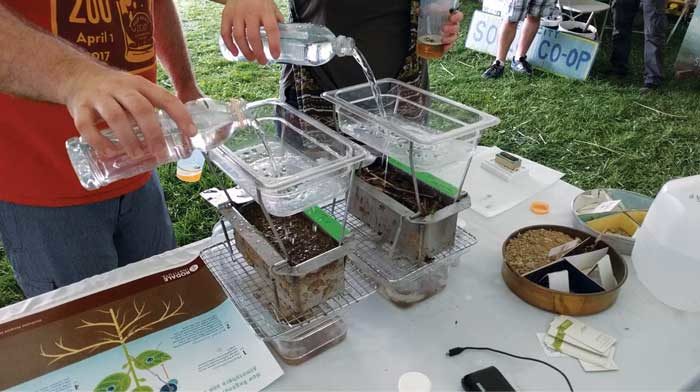No-Till Farmer
Get full access NOW to the most comprehensive, powerful and easy-to-use online resource for no-tillage practices. Just one good idea will pay for your subscription hundreds of times over.

RAINING DOWN. Rainfall simulators are among the most effective visual teaches of soil health lessons. They can be built on different scales, from larger displays seen at field days and conferences to benchtop models. Boards can even be placed underneath to show what happens at different grades of slope.
If you want to know more about your soils, the quickest way to find out may involve digging around in your shed or taking a road trip to the hardware store.
There are many uncomplicated, useful tools for gauging the microbial health, tilth and water infiltration rate of your farm ground, “to get a better understanding of what soil health really is and how this fits within soil physics, chemistry and biology,” says soil microbiologist and principal scientist of KRIS Systems, Kristine Nichols.
Below are some simple assessments and some basic guidelines on how to do them.
Nichols says the shovel “is the most valuable tool in agriculture,” when coupled with observation to make sure you’re seeing what’s happening below ground, not just above ground.
“Use a shovel to pull up soil samples, hold them in your hand, run them through your fingers, see how moist they are, how well they stick together, how well they may fall apart, and what is some of the structure?” she says. “Do you see various types of clods of different sizes? Roots? Are there earthworms?
“I’ve talked with various producers who will do some of these things when they’re talking with their agronomist and advisors, and even their bankers, so they get a better understanding of what’s going on and ensure everyone’s on the same page regarding how soil is actually functioning and what soil looks like.”
One of the ways to understand how soil…